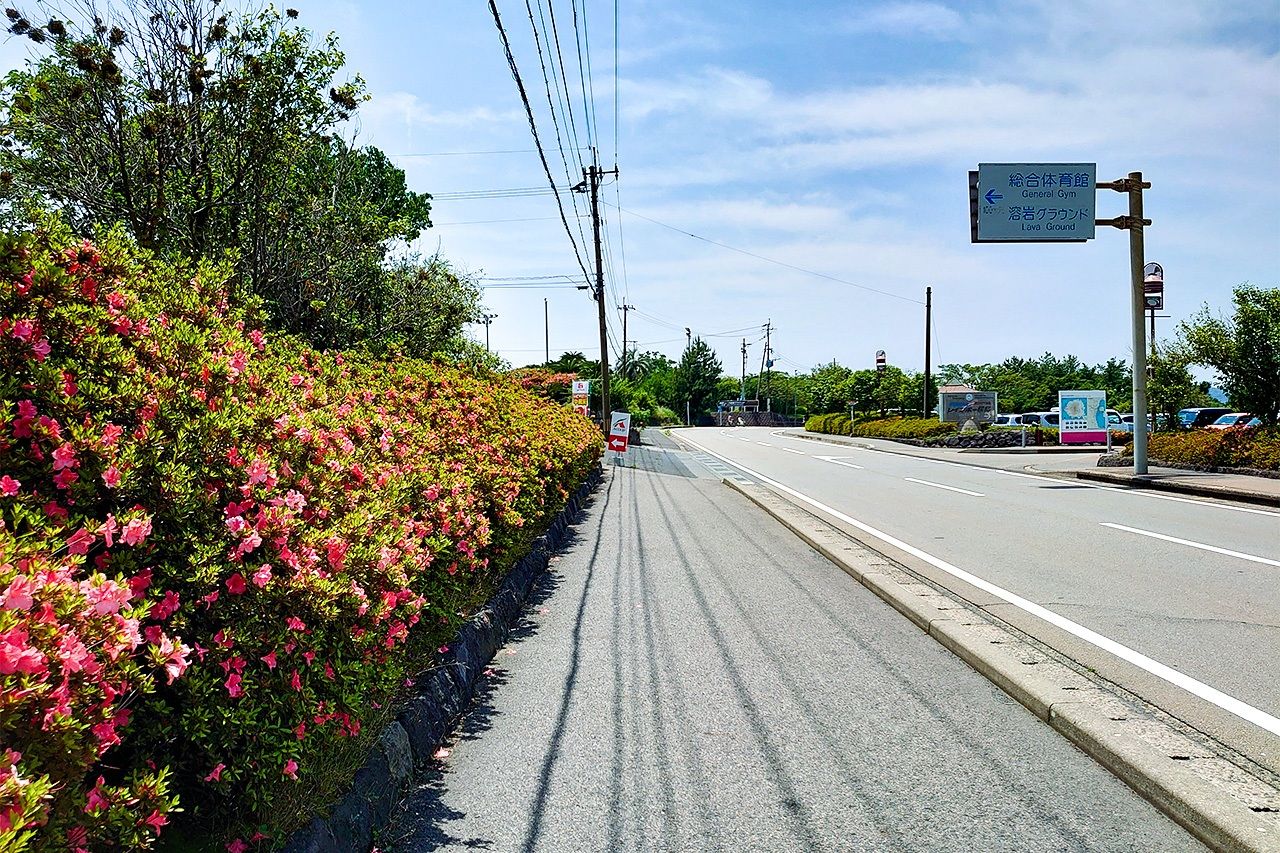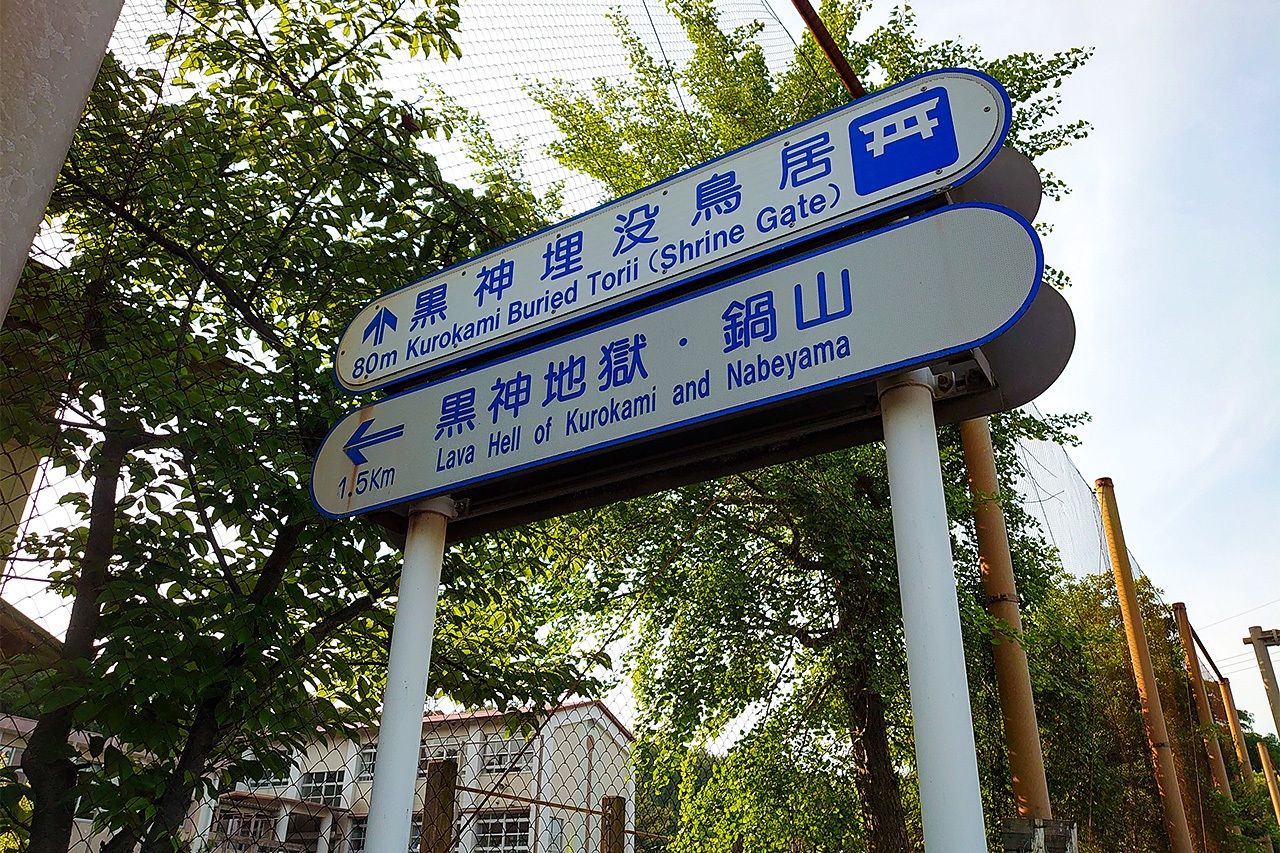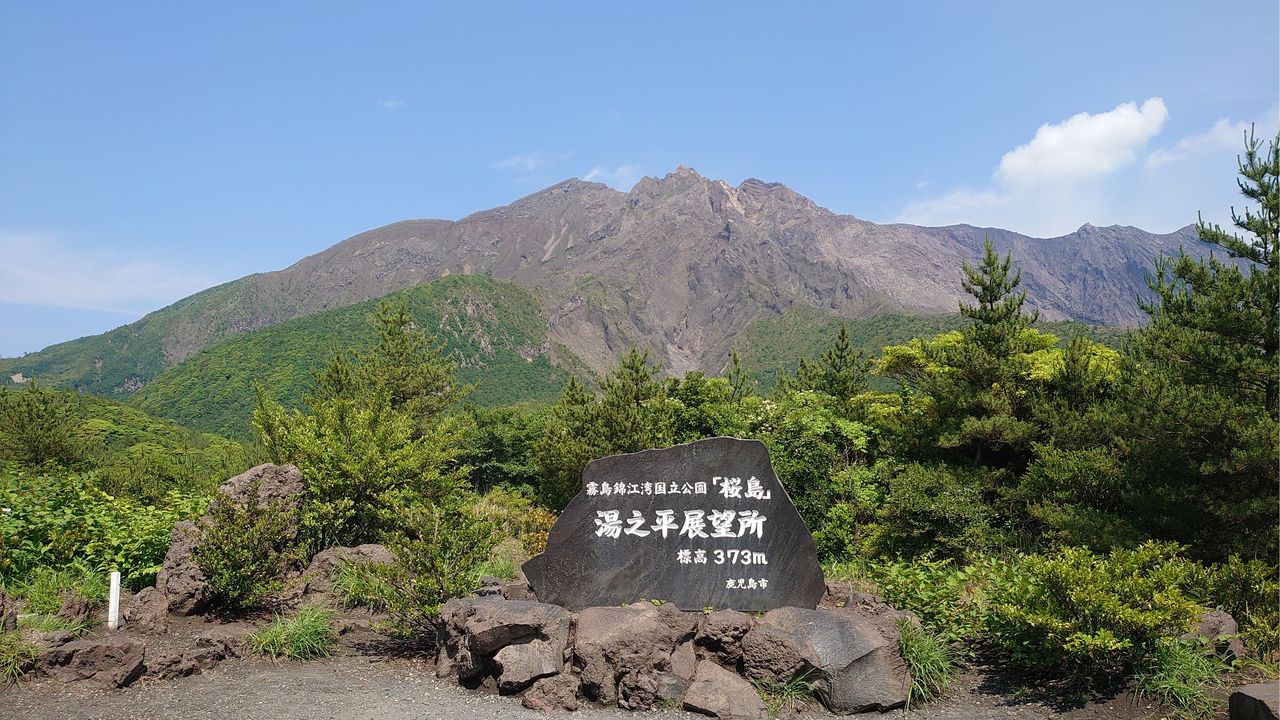
A Trip to Sakurajima: The Door to Hell Is Locked
Travel- English
- 日本語
- 简体字
- 繁體字
- Français
- Español
- العربية
- Русский
Life in the Shadow of a Sleepless Volcano
Sakurajima is neither a famed sakura cherry tree spot, nor is it an island—shima or jima.
You can board a ferry from Kagoshima and land at Sakurajima port in 15 minutes. The fee, paid on arrival, is ¥200. It’s rare to pay for a ferry after the ride, but what’s even more rare about this ferry is that it runs 24 hours a day. During the day they run every 15 minutes or so, but even late at night, there’s one an hour. Not even Tokyo’s buses and trains run around the clock.
But this is Sakurajima, which is without exaggeration Japan’s most famous volcano. Even all the way up in Tokyo, I occasionally get reports of Sakurajima erupting in my emergency app, and the internet news site I read often feature headlines like “Explosive eruption on Sakurajima.” The statistics say that Sakurajima erupted 145 times in 2021, and of those 84 apparently qualified as “explosive eruptions.” That’s an average of one eruption every three days. I think it mysterious, to say the least, that people live in such a volcanically active area.
I ran into something that demonstrated the unusual character of life in a volcanic hot spot just as soon as I landed at Sakurajima. I went to a car rental shop near the port to rent a moped for easier transportation around the area, and the manager—a man in his sixties or so—asked, “Do you ride mopeds a lot?”
I kept my answer vague, since I wasn’t sure what he was actually getting at. “Sure, I guess. A bit.”
“There are lots of accidents on Sakurajima,” he said. “Lots of ash falls around here, and it makes the roads slippery. I’d recommend against riding out here if you aren’t used to it.”
“There was a fatal accident just the other day. Two bikes collided,” added a woman standing next to him. She was presumably his wife.
“Is it really that dangerous?” I asked in surprise.
“Well, it just takes some getting used to. We have six mopeds, but four are wrecked at the moment. So, only two are available now.”
It’s hard not to be scared after a talk like that. I decided to put safety first and took the bus. Thinking about it now, I once rode an electric scooter over unpaved gravel roads in Bagan, Myanmar. If I made it through Bagan, surely I’d be fine on Sakurajima. But still, this was my first visit to a volcanic area, so it wouldn’t hurt to be careful. I can come back to Sakurajima whenever I want, but I only get one body and one life.
How did Sakurajima get its name if it’s not a place famous for cherry blossoms? There are several theories, but only two have any real traction. The first is the “place-name etymology” theory, which says that Sakurajima came from three separate older words: sa, kura, and shima—which becomes jima in this compound. Sa is simply a prefix, while kura means “mountain with cliffs, collapsed valleys, or steep slopes,” and shima means “island,” as it still does today. In other words, it never had anything to do with sakura blossoms at all. The other is the “Bunmei era eruption” theory. This says that during a major eruption during the Bunmei era (1469–87), the pillar of smoke that rose from its peak resembled a cherry tree, and the white pumice that it set floating on the ocean waves looked like cherry petals on the water. So, it seems people started calling it Sakurajima. There’s no way to tell which is correct.
A Shrine on the Lava
Just a few minutes’ walk from the port stands a small shrine, Tsukyomi Jinja. In the Kojiki chronicle of ancient Japanese myths, it says that when Izanagi bathed himself to purify his body after returning to this world from the land of the dead, washing his left eye gave birth to Amaterasu Ōmikami, washing his right eye gave birth to Tsukuyomi-no-Mikoto, and washing his nose gave birth to Susanoo-no-Mikoto. Amaterasu is goddess of the sun and presides over the heavens of Takamagahara, while Tsukuyomi is god of the moon and presides over the kingdom of night. Susanoo presides over the sea. These three gods are known as the sankishi, or “three precious children,” and were originally all roughly equal in status. However, for some reason Tsukuyomi hardly shows up at all in the Kojiki, and leaves very little impression overall. I found myself intersted in the fact that such a little-known god actually has a shrine, so I climbed the stone stairs into the precincts.
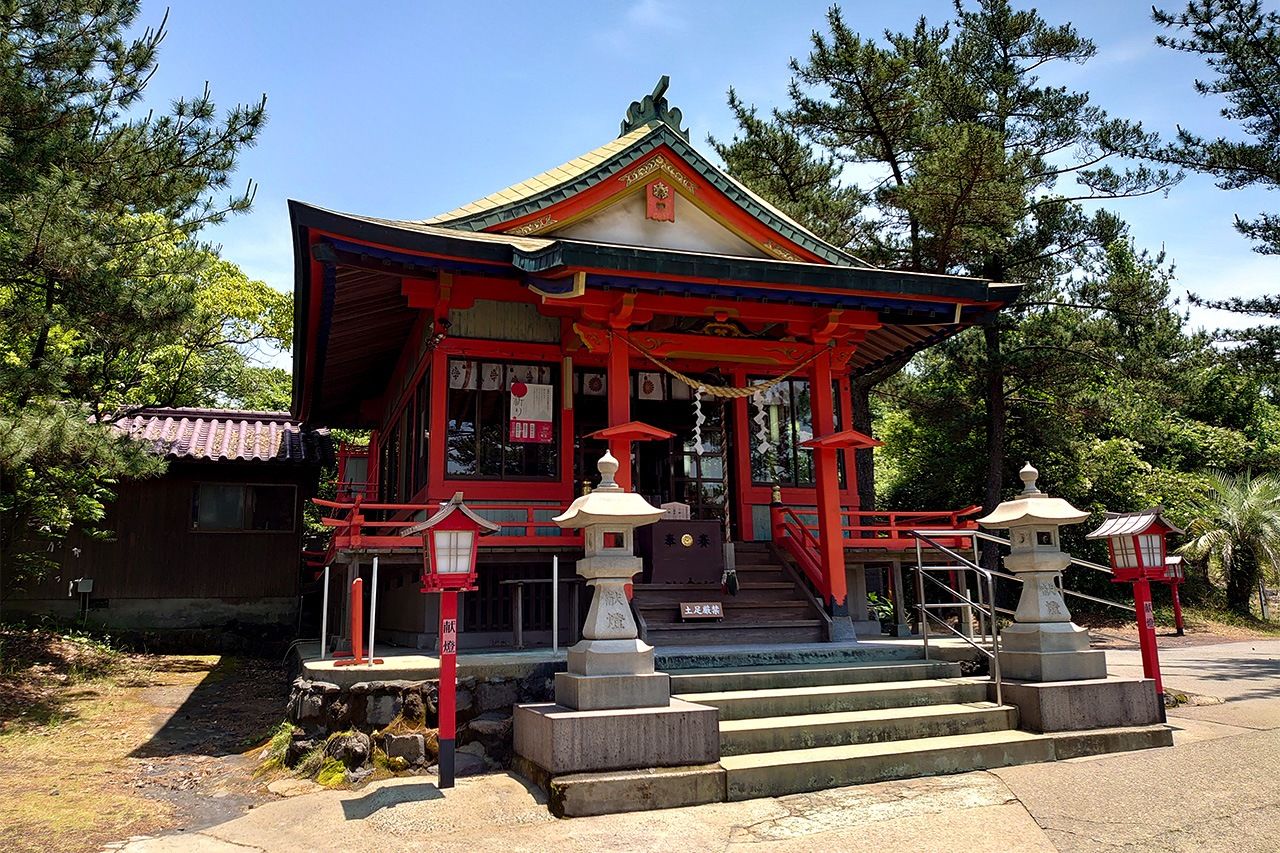
The main shrine at Tsukiyomi Jinja.
There was no sign of people in the grounds, and the white torii gate and red shrine building looked like just any other shrine I’d seen. A signboard read “Local tradition . . . says that Tsukuyomi-no-Mikoto was born at Sakurajima.” I nodded my head in comprehension. The inscription went on. “On January 12, 1914, lava from a major eruption buried the shrine and its precincts, and the shintai [object of worship at a shrine] was relocated temporarily. Construction of a new shrine began here in November 1939, and in August 1940, the shintai was returned.”
In other words, this is not the original location for Tsukiyomi Jinja. It was moved here after a major 1914 eruption, known as the Taishō eruption after the period when it happened, destroyed the original. And that’s not all. The current shrine was built atop a hardened lava flow from that eruption—lava that buried several villages.
So, the ground beneath my feet could well be hiding the remains of communities buried in a volcanic eruption over a hundred years ago.
Deeper inside the grounds I found a monument with a poem by Takahama Kyoshi. This is the poem:
Yōgan ni akikaze no fukiwatari keri
Across this lava/only the autumn winds/blow on
It seems to be saying that above this lava, which has swallowed whole villages, now only the winds of the fall make their presence known.
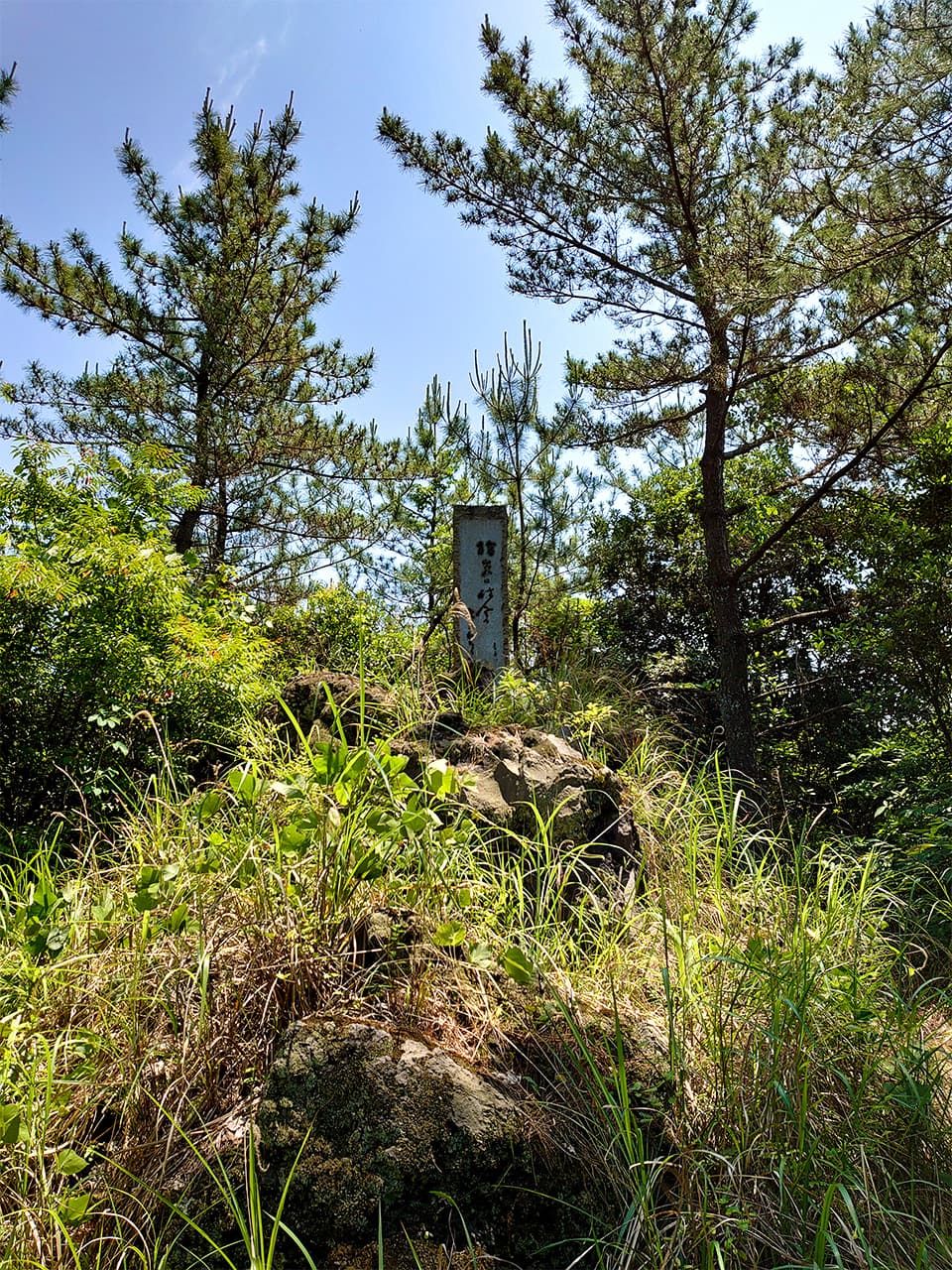
The monument bearing Takahama Kyoshi’s poem.
An Eruption Reaches Russia
Even from a broader historical perspective, the Taishō eruption was a massive one. The plume went 8,000 meters high, and it sent volcanic ash into the air that rode the winds all the way to Russia’s Kamchatka Peninsula. Sakurajima is in Kyūshū, the southernmost of Japan’s four main islands, which means that for the ash to reach Russia it must have traveled across almost the whole Japanese archipelago. They say the eruption ejected 3 billion tons of debris. If you figure the average human mass is 70 kilograms, then this amount is 5.6 times the mass of the while world population. That’s a truly unimaginable scale. Originally, Sakurajima actually was an island, but the lava flow from that eruption connected it to the Ōsumi peninsula, so it stopped being an island over a century ago.
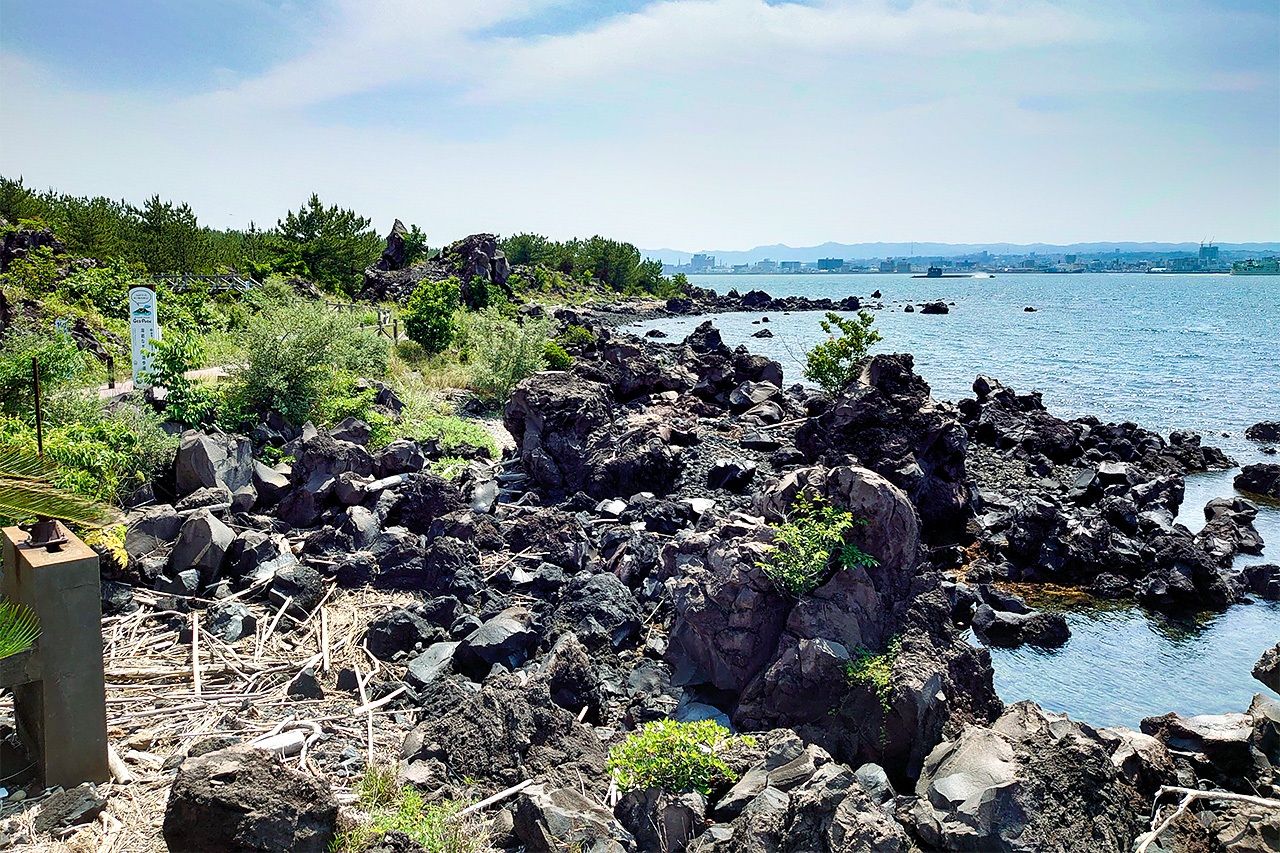
Rough seaside scenery, courtesy of old lava flows.
With an eruption on that huge a scale, one would imagine lots of casualties. But it seems that wasn’t the case. Just 35 people died in the Taishō eruption and another 23 went missing, while there were 112 injuries. Most of those were not on Sakurajima. The local residents must have been used to volcanic activity, because many had evacuated in their own boats before the eruption. Most of the dead were in the city of Kagoshima, where they lost their lives in collapsed buildings during the earthquake that followed the eruption, rather than in the volcanic fire itself.
As I looked on scenic Sakurajima, I could hardly imagine such a disaster. The roadside hedges were abloom with pink satsuki rhododendrons, and the seaside promenade was lined with mango trees. The promenade also has footbaths taking advantage of the geothermal heating, and I saw several tourists soaking their feet. Looking out across the cerulean sea, I could just make out the urban landscape of Kagoshima on the opposite shore. That sea, Kinkō Bay, was formed by ground subsidence from a major eruption some 29,000 years ago.
Life Goes On
On the Sakurajima hazard map, the circle labeled “Area where volcanic rocks are expected to reach nearly concurrently with a large eruption” basically covers the entire area. Naturally, no one knows when an eruption of that scale will happen, which means rocks could come raining down from the sky at any time. Despite the fact that this highly active volcano erupts once every three days, and can destroy everything around it in an instant, people sleep here, get up here, eat and go to school and work here. They run businesses and build relationships with one another. People lead totally normal, everyday lives in the shadow of the mountain.
Since the volcano’s threat can’t be removed, they accept and coexist with it. The daily routines here including things like wearing helmets on the way to and from school to protect heads from volcanic debris, packing volcanic ash falling around houses into official “ash bags” for collection, and evacuating to designated shelters set up around the area in emergencies. I was impressed at the determination on display, but at the same time, now that I think about it, I’m no stranger to the threat of disaster. I live in Tokyo, where an earthquake directly under the capital could occur at any time.
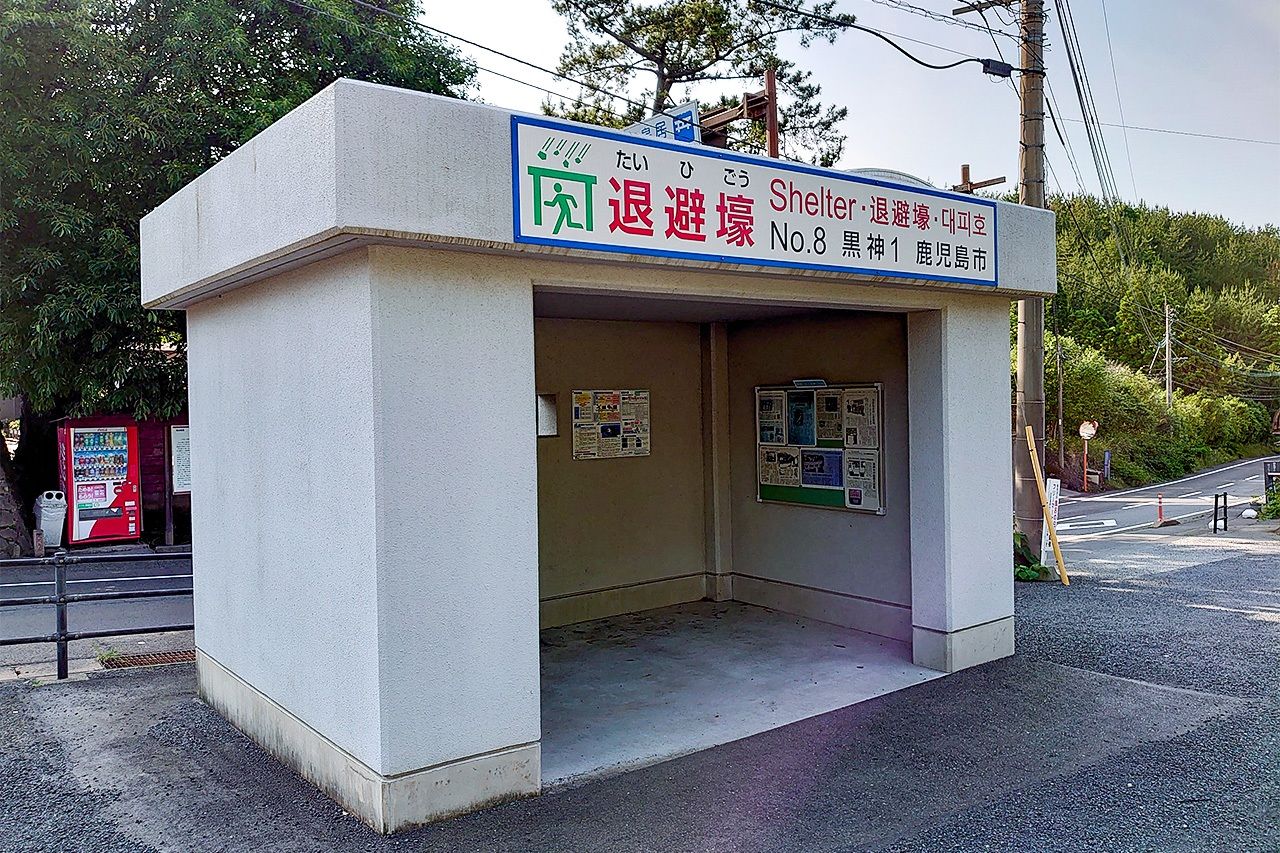
These evacuation shelters are set up all over Sakurajima.
One spot that illustrates clearly the terror of the Taishō eruption is the Kurokami buried torii. It’s in the town of Kurokami, on the east side of Sakurajima, about 30 minutes from the port by taxi. It was originally a 3-meter-tall shrine gate, but was buried during the Taishō eruption, so that now only the very top sticks from the ground. There is a junior high school next to the buried torii, but it being a weekend, there was no sign of life there either.
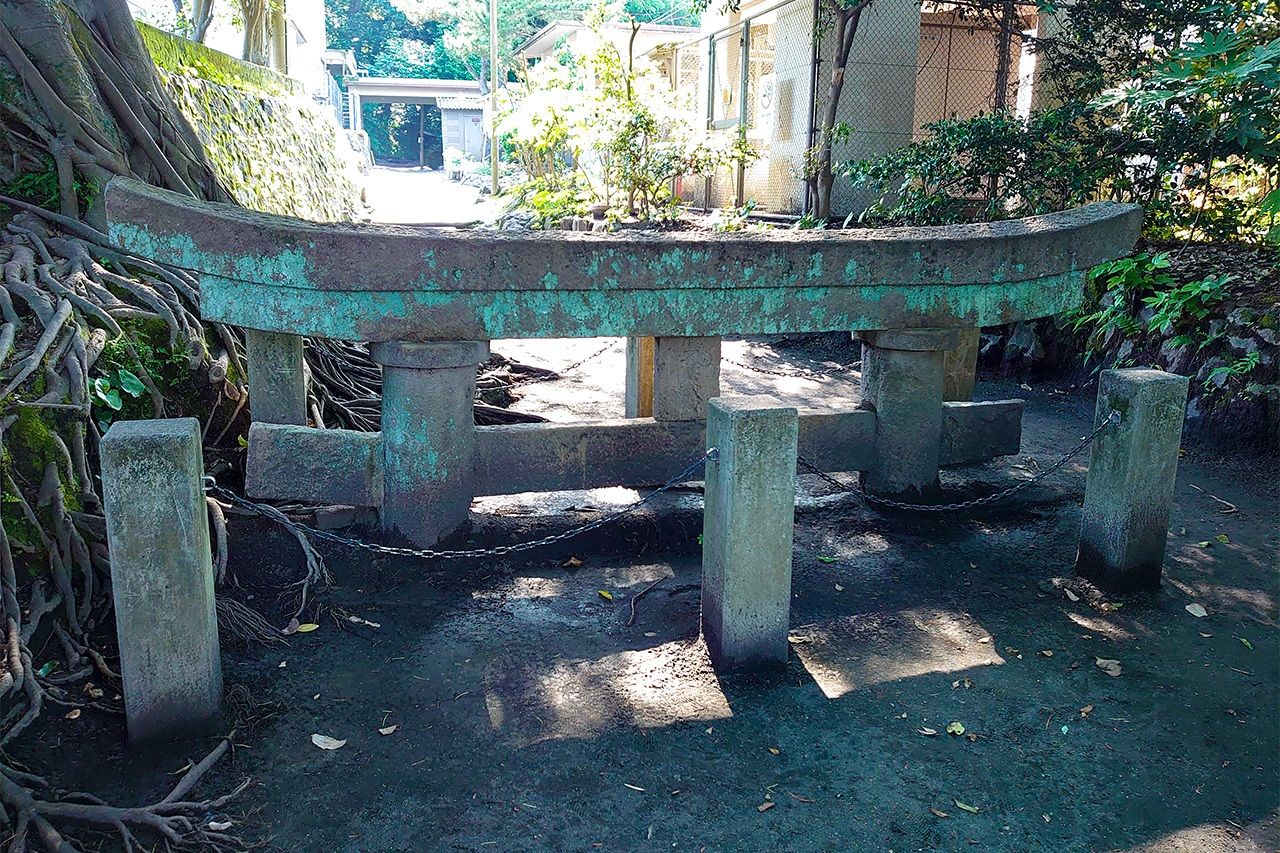
The Kurokami buried torii. It was originally three meters tall, but most of the height is hidden under lava.
The buried torii is a famous spot, but there is nothing else of note nearby, nor any restaurants or cafes. So not only is there nothing to do, there’s no place to take a break, either. Bus service is infrequent, and after my visit to the torii I had an hour to wait for my next ride. As I was wondering if I should just stand by the road waiting, a road sign caught my eye. It read, “Lava Hell of Kurokami and Nabeyama.”
Lava Hell?
The Road to Hell
The sign held no other information, and the name offered no hint of what kind of place it might be. I had nothing else to do, so it seemed worth a try, but 1.5 kilometers . . . Unsure of what to do, I searched for the place on my smartphone. What I found were pictures of a desolate riverbank in a harsh and enticing landscape, with what looked like the scars of past eruptions. Thinking that it seemed worth a look, I set out on the road to the Lava Hell.
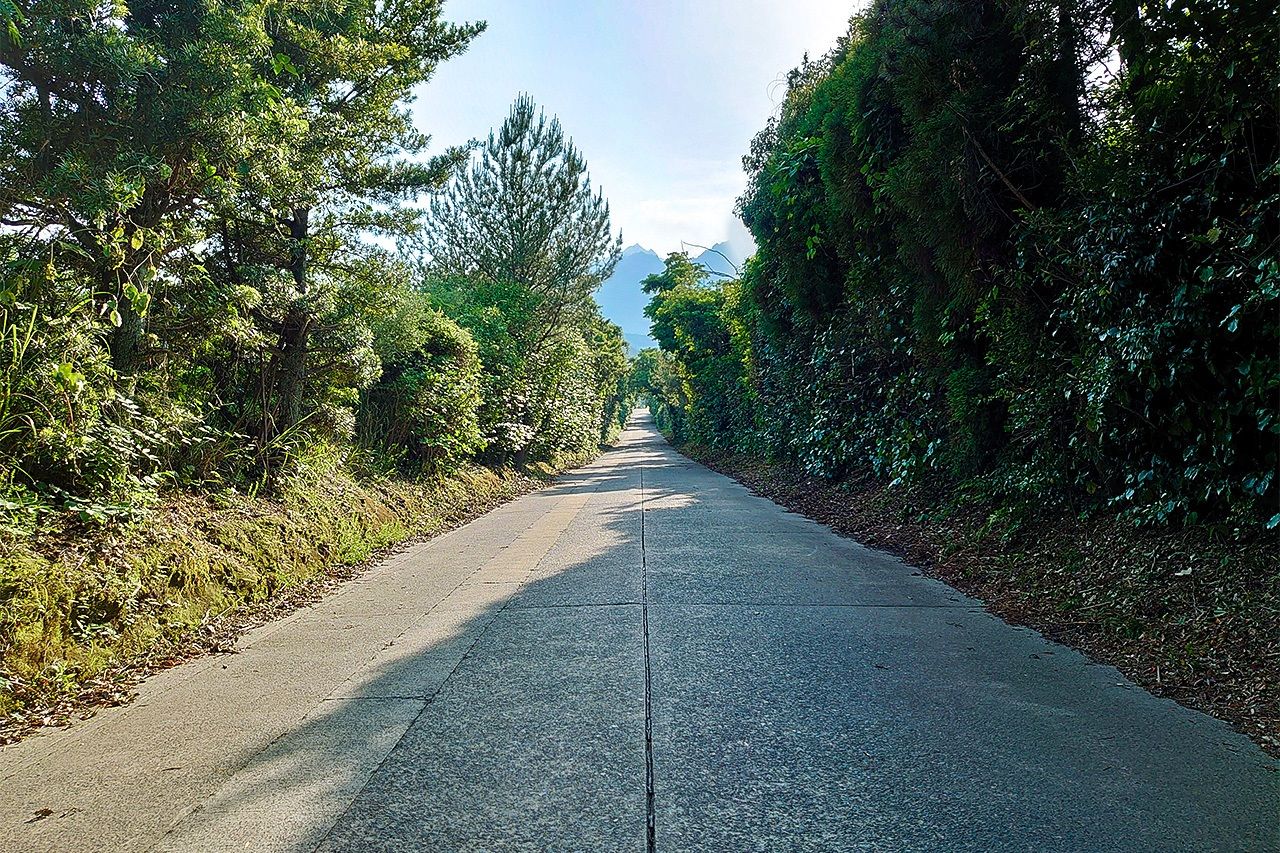
The road leading to Kurokami Lava Hell.
The day was a bright and sunny one, and plenty hot for a late afternoon. I walked down the straight road with no end in sight. The roadsides were devoid of facilities or any sign of people, just endless overgrown trees. I started to get discouraged, wondering if I was doing the right thing to walk this deserted road alone. Google Maps showed that it would pass something called the Kurokami Observatory, part of the Kyoto University Disaster Prevention Research Institute’s Sakurajima Volcano Research Center. I was buoyed by the thought that if they had an observatory here, there must be someone around. But when I got there, I found a building devoid of people. The entrance gate was locked.
I emptied my mind, ignored my aching feet, and just kept walking. I thought vaguely that after going through through all this misery, I would accept nothing less than the most spectacular scenery. When I’d walked about 15 minutes, I finally saw the end of the road.
A locked gate with a sign reading: No entrance beyond this point.
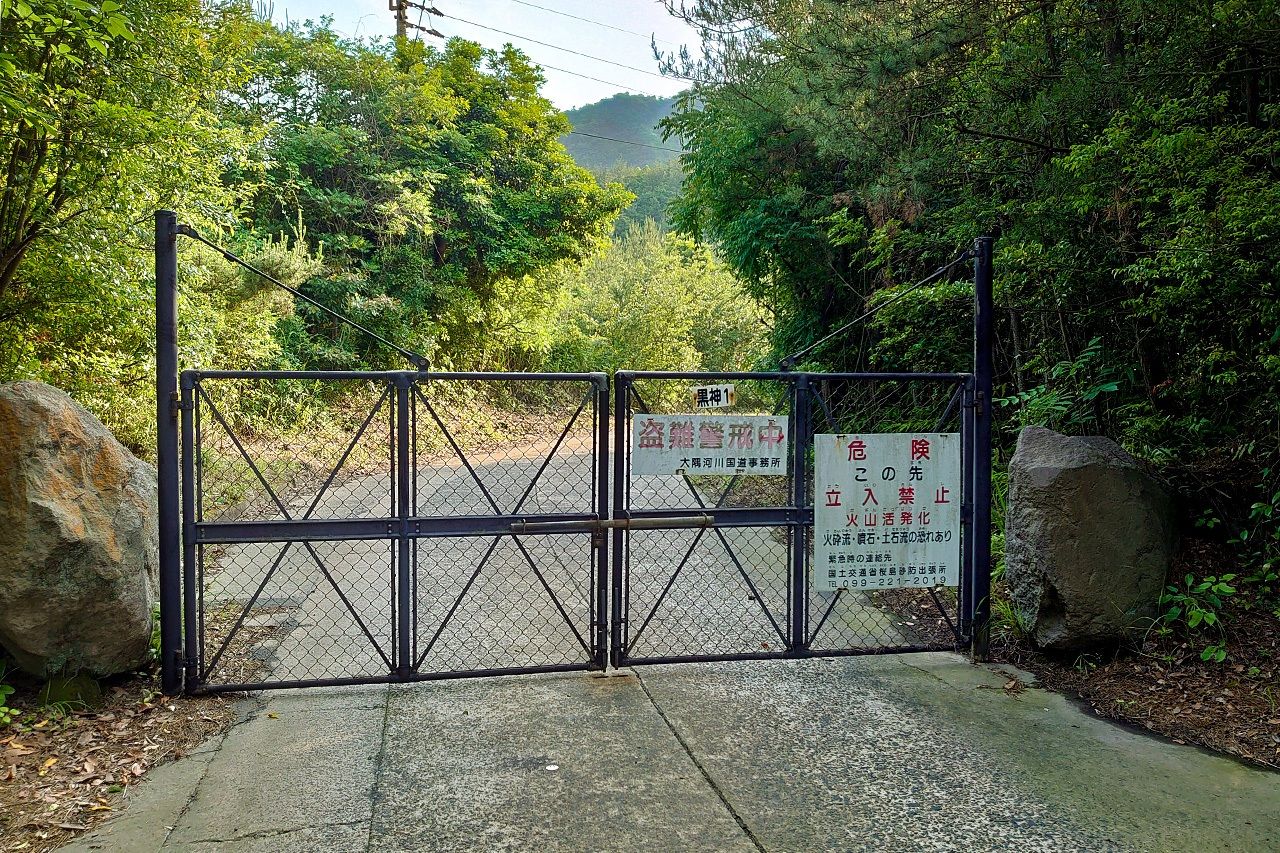
The abominable “no entrance” sign.
And Yet, Life Must Go On
Huh? No one said anything about this! Why keep that sign up on the main road if you can’t go in?!
I was overcome by the pure lack of reason and my own impotent anger, but, well, that impotence was hard to argue against. There was nothing I could do. It’s not like I could lodge a complaint with the Kurokami town office.
All I could do was accept it. I gave up and turned back to take that long road back from hell.
Later, I looked at travel blogs and found that as of 2010, people were still posting pictures of the Kurokami Lava Hell, but in 2011 they were already posting that it was off-limits—meaning it had been closed to entry for 11 years.
I cried out silently, “Then take down that sign promising a 1.5-kilometer trek to the Lava Hell of Kurokami and Nabeyama!”
After my pointless 30-minute round trip, I still had 20 minutes to wait for the next bus. It came as I was listening to podcasts on my phone. No one else was on board. The bus driver was a chatty sort, and he asked me “How’d you get to that bus stop?” rather suspiciously. Clearly, most tourists here came by car, so bus riders were rare. We talked all the way back to port. I had taken the south road to Kurokami, but we took the north road on the way back. That completed my circuit of Sakurajima.
I pondered my failed trip to hell on the ferry back to Kagoshima. I thought about how there’s no proof that this world isn’t already hell, but even if it is, there’s nothing we can do but accept it and somehow keep on living. Like the people of Sakurajima.
(Originally published in Japanese. All photos © Li Kotomi.)
